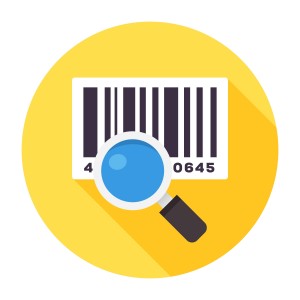|
Application
|
Technology
|
Material
|
Adhesive
|
|
ABS, aluminum, and stainless steel surfaces with outdoor exposure for up to 7 years
|
TT
|
Long-life acrylic
|
High-performance permanent
|
|
Asset tracking
|
TT
|
Polypropylene
|
Permanent or high-tack permanent
|
|
Asset tracking, excellent chemical-resistance
|
TT
|
Polyester
|
Permanent, high-performance, or high-tack permanent
|
|
Asset tracking, good chemical-resistance
|
TT
|
Polyester gloss
|
Permanent, high-performance, high-tack permanent, or removable
|
|
Chemical drums
|
TT
|
Corona-treated polyolefin
|
Permanent all-temp
|
|
Chemical drums (1-2 years outdoors)
|
TT
|
Polypropylene
|
Permanent or high-tack permanent
|
|
Circuit boards
|
TT
|
Polyimide
|
High-temp permanent
|
|
Cold storage
|
TT
|
Polypropylene
|
Permanent or high-tack permanent
|
|
Hard-to-label surfaces
|
TT
|
Polypropylene or polyester
|
Permanent or high-tack permanent
|
|
Hard-to-label surfaces, excellent chemical-resistance
|
TT
|
Polyester
|
Permanent high-tack
|
|
Harsh environments with high temps
|
TT
|
Polyester
|
High-temp permanent
|
|
Industrial settings with high temps
|
TT
|
Polyimide
|
High-temp permanent
|
|
Jewelry (for use in cleaners only)
|
DT
|
Polypropylene
|
Permanent
|
|
Jewelry (for use in cleaners and steamers)
|
TT
|
Polypropylene
|
Permanent
|
|
Outdoor tools and equipment
|
TT
|
Polyester gloss
|
High-performance permanent
|
|
Outdoor tools and equipment
(10 years, UID compliance)
|
TT
|
Long-life acrylic
|
High-performance permanent
|
|
Product labels
|
TT
|
Polypropylene
|
Permanent all-temp
|
|
Serial plate labeling, excellent chemical-resistance
|
TT
|
Polyester
|
Permanent, high-performance, or high-tack permanent
|
|
Serial plate labeling, good chemical-resistance
|
TT
|
Polyester gloss
|
Permanent, high-performance, high-tack permanent, or removable
|
|
Shelves and bins (removable), excellent chemical-resistance
|
TT
|
Polyester
|
Removable
|
|
Shelves, bins, furniture, products (removable)
|
TT
|
Polypropylene
|
Removable
|
|
UID-compliance
|
TT
|
Polyester
|
Permanent or high-tack permanent
|
|
UL/cUL and CSA-compliant product identification, excellent chemical-resistance
|
TT
|
Polyester
|
High-performance
|
|
UL/cUL and CSA-compliant product identification, good chemical-resistance
|
TT
|
Polyester gloss
|
Permanent, high-performance, high-tack permanent, or removable
|
|
UL/cUL-compliant product identification, excellent chemical-resistance
|
TT
|
Polyester
|
Permanent, high-performance, or high-tack permanent
|
|
Utility meters
|
TT
|
Polyester gloss
|
High-performance permanent
|
|
Utility meters
(10 years, UID compliance)
|
TT
|
Long-life acrylic
|
High-performance permanent
|
|
Vending machines
|
TT
|
Polyester gloss
|
High-performance permanent
|
|
Vending machines
(10 years, UID compliance)
|
TT
|
Long-life acrylic
|
High-performance permanent
|
|
Warning labels (long-term)
|
TT
|
Long-life acrylic
|
High-performance permanent
|
|
Source: Zebra Technologies
|



